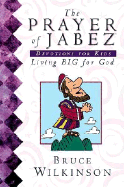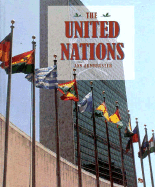My son had his yearly studio piano recital last night and it also went well. They have been studying Scott Joplin and Jazz music all semester. Most of the songs were ragtime, jazz, or blues related pieces.... They all created fact finders on Scott Joplin, as well. I'm glad that his grandfather got to see him perform.
His writing through literature class did not meet this past week. He did get started on A Christmas Carol, which is going to be their next book. I had him writing comparison and contrast papers for me this week on some of the other lit books he's covered this semester. He wrote one on Call of the Wild, Sounder, and Old Yeller, and another on Little Lord Fauntleroy and A Little Princess. His other language arts work progressed as usual.
He completed a study of matrices with his algebra instructor and took a test over that. At home, we've been working through some word problems. I'm not quite sure why these give him such difficulty. He has always had trouble setting up his equations for algebra word problems. I thought working through some that are simpler than those in his Dolciani text might help, but alas it doesn't seem to be working. I'm sort of at a loss as to why this is so hard for him.... I'm sort of beginning to wonder if this might be an element of dysgraphia....
He finished up the Bible Prophecy book he's been slowly reading through and has begun a devotional journal using the Prayer of Jabez.

He is still working on finishing up The Yearling, but has also been reading some of O. Henry's stories, including an illustrated version of Gift of the Magi.

We have gotten into the study of energy, force, and motion in our little science class. We are using a Prentice Hall Science Explorer book as well as a Nutshell kit right now. I'm also pulling a lot of info from the web, as well as using library books. I already listed a lot of my initial websites (I think) when I posted my resource list for eighth grade, but here are some other sites I've also used more recently:
These are related to Gears:
http://www.exploratorium.edu/cycling/gears1.html
http://www.exploratorium.edu/cycling/wheel1.html
http://www.mos.org/sln/Leonardo/InventorsToolbox.html
http://www.mos.org/sln/Leonardo/GadgetAnatomy.html
http://www.fi.edu/time/Journey/Time/Escapements/escapemLG.html
Here are some related to energy, force, and motion:
http://www.learner.org/interactives/parkphysics/coaster.html
http://www.eia.gov/kids/energy.cfm?page=about_forms_of_energy-basics
http://glencoe.mcgraw-hill.com/sites/0078778115/student_view0/unit6/chapter20/math_practice_2.html
We are currently studying:
1) What is Energy? Potential (energy at rest or stored energy) and Kinetic (energy in motion)
2) Effects of the Force of Gravity (attraction of objects to each other) on Inertia (an object at rest stays at rest; an object in motion stays in motion - Newton's first and second laws). We have talked about the difference between Mass (number of atoms in an object; stays the same anywhere in the Universe) and Weight (pull of gravity, changes on different planets, in space, etc.) We are looking at these first two points through our Nutshell experiments. For the problems associated with motion, we are using the PH book.
3) Motion - the state in which one object's distance from another is changing. An object is in motion if it changes position relative to a reference point.
We talked about how scientists around the world use the International System of Units (SI) for measurement (the metric system, basically), rather than our English system. We did a little converting from mm to cm to m, back and forth, etc.
A) We talked about Speed - the distance an object travels in one unit of time. We talked about the difference between constant speed (difficult to keep up) and average speed (used more often in calculations).
Formulae:
Speed = Distance divided by Time
For finding average speed: Average Speed = Total of all distances traveled divided by Total of all times.
We did some speed problems orally.
B) We talked about Velocity not being interchangeable with "speed" in scientific terms. It is speed in a given direction. When you know both the speed and the direction of an object's motion, then you know its velocity.
We looked at how to graph velocity by placing time on the x-axis and distance on the y-axis. I will have a problem on this for them to try next time.
We talked about how the speed of even very slow objects can be calculated using our speed formula. We looked at the example of tectonic plates. For instance, a movement of 5 cm per year x 1000 years, would equal 5000 cm (or 50 meters). We looked also at how to convert this to see how tiny the movement per day would be: 5 cm/ 1 year x 1 year/ 365 days = 5/365 = .0137 cm/day
C) We talked about how what we typically think of as "acceleration" isn't really the same as the term as it is used by scientists. Scientific "Acceleration" includes increasing speed, decreasing speed, or even just changing direction (so a Ferris wheel turning is constantly accelerating, for instance).
Formula to figure acceleration:
Acceleration = Final Velocity - Initial Velocity divided by Time. Initial velocity is often calculated from the zero second point, too, so that has to be taken into consideration.
We did some velocity problems orally and will do some more next time. We talked about how to check your work on these problems.
Next week, I have scheduled two labs that are physics related at Louisville Science Center. The labs we've done there in past have been terrific, so I'm hopeful that these will both be good!
My son also caught up with some science reading this past week (both books and websites). We simply didn't have time for that while his outside science classes were ongoing, but are making good headway now.
In History, we're still playing a bit of catch up, too, and are in the time period following World War I. We finished up reading The Yanks are Coming. We've also been talking about the Russian Revolution (Lenin, etc.) and the rise of socialism/communism and related topics. We'll be moving into talking more about The Great Depression next week.
This week, I read from Usborne's Atlas of the 20th Century regarding the Russian Revolution, the peace after World War I, and the Middle East during that same time period.

I read from the Haywood Atlas of the 20th Century regarding Europe between the wars, the Middle East and North Africa between 1914 and 1948, and the making of the Soviet Union 1917 - 1941.
 (Have I mentioned in the last two seconds that I LOVE Haywood's books?)
(Have I mentioned in the last two seconds that I LOVE Haywood's books?)I read from the Kingfisher world history encyclopedia regarding Russia, the aftermath of WWI, and the USA between the wars.
I read about the Titanic from The Great Ships. (We read more on it last week.) I read from How Children Lived about growing up in 1920's America.
I read from Remember the Ladies regarding prominent women of the roaring '20's and those of the Great Depression.
I read from Haywood's Atlas of Past Times regarding the rise of Japan in Asia.

I read Leaders of the Russian Revolution, Fred Newman (re: Lenin, Trotsky, Kerensky, Kornilov).
I read The United Nations, Ann Armbruster (since we've been talking so much about the League of Nations).

My son worked through a couple of biography funbooks by Carole Marsh that I got at the USAF Museum: Wright Brothers and Charles Lindbergh.


He completed the Bold Leaders of WWI book started earlier, and read two of the stories from Disaster! Ellen Leroe.

On Friday, we visited the Frazier International History Museum to see a special exhibit that they developed themselves entitled "My Brother, My Enemy". It is about the Civil War and they collected lots of artifacts from Kentuckians for the exhibit. Since we only recently finished up our Civil War studies, I wanted to make sure we caught it. We got to see re-enactments by a drummer boy (Union) and Clara Barton. While we were there, we also got to see a demonstration in donning of a suit of armor, look at a huge collection of toy soldiers from worldwide wars and periods that are just beginning to be housed for display, and see the yearly Christmas tree display from countries around the world. We had to rush back to make the piano recital, so we had a full day!
We only have one more week of school until we're off three weeks for Christmas. I'm looking forward to being able to get some things done around the house ( - maybe! It seems that every.single.time. we're off something comes up and I never manage to get ahead....)
I'm ready to work more on classes for next year, too!
Regena








1 comment:
Your blog is beautiful! Sounds like a great week!
Post a Comment